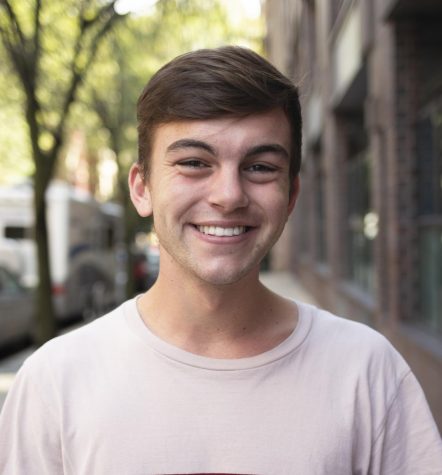Film Series Spotlights Women Behind the Camera

A scene from “The Milk of Sorrow.”
August 1, 2018
Rachel Morrison is not the world’s first female cinematographer, yet this year, she was the first to be nominated for an Oscar. While the annual Academy Awards is by no means the only measurement of talent in the industry, it is a window for aspiring filmmakers to see themselves represented on screen. Uptown at the Film Society of Lincoln Center, a group of cinema enthusiasts have taken matters into their own hands.
Over the next two weeks, the Lincoln Center for Performing Arts will host a new series: “The Female Gaze.” This two-week survey of 36 films is shot exclusively by female cinematographers, including Maryse Alberti (“Creed”), Ashley Connor (“The Miseducation of Cameron Post”), Ellen Kuras (“Eternal Sunshine of the Spotless Mind”) and, of course, Morrison (“Black Panther”), herself.
Between talkbacks with the women on display and a smorgasbord of blockbusters, independents and international features, “The Female Gaze” works to acknowledge the power imbalance within the field of cinematography while also celebrating the contributions of women to the craft.
“Hollywood is an industry built on an art that is built on a gaze that his historically very gendered,” Madeline Whittle, a curator for the series, told WSN. “The reins have really only recently come into the hands of women in a more prominent way.”
Whittle, along with Tyler Wilson and Florence Almozini, have worked over the past few months to curate a wide ranging survey of these women and their work. In the process, they have created a festival of sorts with varying threads for its attendees to follow.
Whittle and Wilson make note of the differing dynamics represented in the almost-four dozen film lineup.
Selections like “Beau travail” and “35 Shots of Rum” capture the relationship between female cinematographers and female directors, most notably Agnès Godard and Claire Denis, respectively; “The Neon Demon” and “Fruitvale Station” examine the contrast between female cinematographers and male directors; “Stranger by the Lake” and “Beach Rats” represent the female gaze within queer cinema while “La bande des quatre” and “Le Pont du Nord” tap into France’s rich history with female DP’s.
Other international selections include Natasha Braier’s work in the Spanish drama “La teta asustada” and Akiko Ashizawa’s work in the Japanese black comedy “Tokyo Sonata.” The robust selection of film from both home and abroad is not meant to overwhelm, but rather celebrate and elevate the work of women.
After all, “The Female Gaze” comes at a time when the history of women’s experience in the industry is in the spotlight more than ever, and while we’re here, the FSLC wants to bring their accomplishments to the fore.
“As always with our programming, we want to call attention to films that we think are beautiful instances of cinematic art,” Whittle said. “Women not only have a place in it, but they have also been crucial to its development.”
Film theorist Laura Mulvey was the first to question the existence of a female gaze and served as inspiration for the series. In her essay “Visual Pleasure and Narrative Cinema,” Mulvey suggests that cinema, especially within the United States., draws upon and caters to male filmmakers and male spectators, and, as Whittle mentioned, appeals only to their “desire and pleasure.” Mulvey dared to ask, “Is there such thing as a female gaze,” and in the process forged a conversation that prevails today.
This conversations served as the impetus for the series. Recent upheavals within the industry, like #MeToo and Time’s Up, also played a role, demonstrating the urgency of conversations like these. And for curator Tyler Wilson, the upcoming centennial of the American Society of Cinematographers was also key.
Wilson noted that in the organization’s nearly 100 years, the first woman to join, Brianne Murphy, was not invited until 1980. Her work on the Anne Bancroft comedy “Fatso” not only marked the first woman’s entry into the ASC, but also the first female cinematographer to shoot a major studio picture in Hollywood. This feat is still as important as ever today since women only comprise five percent of the industry’s cinematographers and seven percent of the ACS’s membership.
“Cinematography is a field that has not often been associated in discourse with prominent women practitioners,” Whittle told WSN. “Yet, some of the greatest cinematographers in the past few decades have been women.”
“The Female Gaze” series will run at the Walter Reade Theater through Aug. 9. Learn more at filmlinc.org.
Email Ryan Mikel at [email protected].
























































































































































